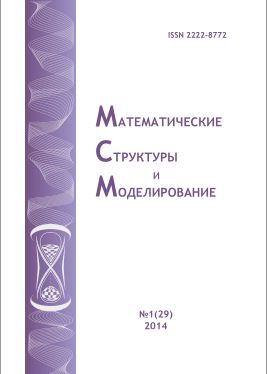
|
|
Фундаментальная математика и физика
А.Г. Гринь
Условия слабой зависимости в предельных теоремах для обобщённых сумм
Приводятся "общеупотребительные" условия регулярности, обеспечивающие выполнение минимальных условий слабой зависимости в предельных теоремах для обобщенных сумм.
O. Kosheleva, V. Kreinovich
Space-Time Assumptions Behind NP-Hardness
of Propositional Satisfiability
For some problems, we know feasible algorithms for solving them. Other computational problems (such as propositional satisfiability) are known to be NP-hard, which means that, unless P=NP (which most computer scientists believe to be impossible), no feasible algorithm is possible for solving all possible instances of the corresponding problem. Most usual proofs of NP-hardness, however, use Turing machine – a very simplified version of a computer – as a computation model. While Turing machine has been convincingly shown to be adequate to describe what can be computed in principle, it is much less intuitive that these oversimplified machines are adequate for describing what can be computed effectively; while the corresponding adequacy results are known, they are not easy to prove and are, thus, not usually included in the textbooks. To make the NP-hardness result more intuitive and more convincing, we provide a new proof in which, instead of a Turing machine, we use a generic computational device. This proof explicitly shows the assumptions about space-time physics that underlie NP-hardness: that all velocities are bounded by the speed of light, and that the volume of a sphere grows no more than polynomially with radius. If one of these assumptions is violated, the proof no longer applies; moreover, in such space-times we can potentially solve the satisfiability problem in polynomial time.
F. Zapata, V. Kreinovich
Knowledge Geometry is Similar to General Relativity: Both Mass and Knowledge Curve The Corresponding Spaces
In this paper, we explain and explore the idea that knowledge is similar to mass in physics: similarly to how mass curves space-time, knowledge curves the corresponding knowledge space.
A.V. Levichev, O. Simpson, B. Vadala-Roth
On Hyperbolic Motion in Two Homogeneous Space Times (Research Announcement)
In 1960 W. Rindler generalized the concept of hyperbolic motion to an arbitrary Lorentzian manifold and studied this motion in the case of de Sitter spacetime. We specify Rindlers (nonlinear) system of differential equations in the case of the Segals compact cosmos D (which is locally isometric to the Einstein static universe), and in the case of the Heraclitian spacetime F. This F is the real Lie group U(1,1) with a certain biinvariant metric on it whereas D is U(2) with a biinvariant metric on it. In each case, we present a particular solution to the Rindlers system.
Прикладная математика и моделирование
Н.П. Гришенкова, Д.Н. Лавров
Обзор методов идентификации человека по радужной оболочке глаза.
В статье представлен обзор современных методов идентифика- ции и верификации человека по радужной оболочке глаза. Вначале излага- ются хорошо известные факты о строении глаза и его радужной оболочки. Далее описываются основные принципы работы биометрических систем и показатели качества их работы. Следующий раздел описывает известные методы: выделения зрачка, выделения радужной оболочки, преобразования к эталону, определения границ радужки. Затем описываются алгоритмы определения ключевых точек на основе вейвлет-преобразований. В част- ности, описывается применение фильтра Габора. Описаны методы сравне- ния с эталоном на основе расстояния Хэмминга и метода проекционной фазовой корреляции. Обсуждаются достоинства и недостатки описанных подходов.